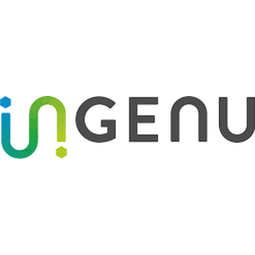Case Studies
-
(3)
- (3)
-
(3)
- (2)
- (1)
- (1)
-
(2)
- (2)
-
(1)
- (1)
ANDOR
- (3)
- (1)
- (1)
ANDOR
- (3)
- (2)
ANDOR
- (2)
- (1)
- (1)
- (1)
ANDOR
- (5)
ANDOR
Please feel encouraged to schedule a call with us:
Schedule a Call
Or directly send us an email:
Compare
|
|

|
Oil company Shell wants to take advantage of an internet of things (IoT) connectivity solution to improve the company’s monitoring capabilities for its operations in Nigeria.
|
Download PDF
|
|
|

|
WellAware was exploring the market for a reliable solution for collecting data from its customers’ remote well locations. According to WellAware CEO, Matt Harrison, the company’s customers have a tremendous need to tap into the intelligence provided by the digital oilfield. In selecting a provider for its network, WellAware compared the features of an array of communication technologies. Cellular provided adequate coverage, but at the rate of $25-$50 per month per device, the cost was extremely high. Satellite was even more expensive, in excess of $100 per month per device. As a typical oilfield consists of more than 1,000 wells, implementation of these technologies would quickly become cost-prohibitive. Additionally, cellular and satellite technologies were only able to deliver between 85-95 percent data availability and were not able to transmit data at sub-minute frequencies. This was not sufficient to meet the reliability expectations of WellAware’s customers.
|
Download PDF
|
|
|

|
N.V. Elmar had initiated a project to implement a smart grid network across the entire island. The enhanced grid would streamline electricity distribution processes and provide N.V. Elmar’s customers with access to usage data which would result in more efficient use of power and services. Although the initial network deployment was designed for smart electric meters, N.V. Elmar wanted to have the ability to scale the network to add additional applications. Because this was essentially a greenfield project, the deployment process would start with a pilot program where various technologies would be evaluated. Cost, network longevity, coverage and reliability were all factors in the selection process.
|
Download PDF
|
|
|

|
The Dominican Republic has had its share of challenges as efforts to deliver power more efficiently to consumers have increased. Sub-standard service, inadequate capacity and frequent black-outs have been a common occurrence in this emerging island country. However, as the government energy industry was deregulated, the Dominican Republic looked to companies such as CEPM to deliver innovative energy solutions to its citizens. As such, CEPM sought to find a reliable advanced metering infrastructure (AMI) solution which would withstand rigorous power fluctuations and provide remote monitoring and management of its electrical grid. Additionally, the company was launching a pre-paid electricity program which required reliable data transmission and two-way communication capabilities. Coverage was also an issue due to the country’s varied topography.
|
Download PDF
|
|
|

|
Oil and gas producers are doing everything they can to grind through a period of historically low per barrel oil prices. The period has stretched on for more than a year now, with per barrel prices getting as low as $40. With companies struggling to find revenue in this currently high supply low demand market, it has become increasingly important to minimize maintenance and repair costs. A cheap way of monitoring equipment is by installing sensors and sending information to the cloud, an IoT solution to a problem that has existed for generations.
|
Download PDF
|

